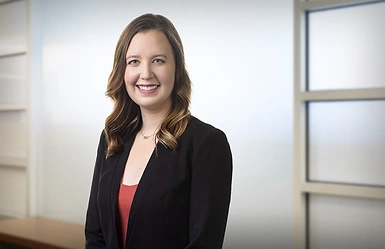On December 29, 2022, President Biden signed into law the Consolidated Appropriations Act of 2023, containing the SECURE 2.0 Act of 2022 (SECURE 2.0). While most of SECURE 2.0’s provisions will not take effect for a couple years, SECURE 2.0 impacts most retirement plans, and plan sponsors should be aware of future changes under SECURE 2.0.
Brief Summary of Significant SECURE 2.0 Provisions:
- Automatic Enrollment and Automatic Escalation Features. Requiring certain new 401(k) and 403(b) plans to include an automatic enrollment feature with a default rate between three percent and 10% of compensation and an automatic escalation feature of 1% per year up to a maximum between 10 and 20%. This requirement is effective for plan years after December 31, 2024.
- Required Minimum Distributions. Increasing the required minimum distribution age from 72 to 73 in 2023 and to 75 in 2033. Beginning in 2023, the penalty for failing to take a required minimum distribution will decrease from 50% to 25%, and it will decrease to 10% if the individual corrects the shortfall within a two year correction window. Roth accounts in employer-sponsored retirement plans will be exempt from the required minimum distribution requirements starting in 2024.
- Roth Elections for Matching Contributions. Allows Roth elections for employer matching contributions, effective immediately.
- Catch-Up Contributions. Increasing the limit on catch up contributions for individuals age 60 to 63 to the greater of (i) $10,000 ($5,000 for SIMPLE plans) or (ii) 150% of the catch-up amount for 2024 (2025 for SIMPLE plans), indexed for inflation. If a participant’s income exceeds $145,000 (indexed for inflation), then catch-up contributions must be made as Roth contributions. These changes are effective January 1, 2025.
- Changes for ESOPs. Owners of an S corporation may defer recognizing taxable income on the sale to an ESOP if the ESOP owns at least 30% of the corporation’s stock and the sales proceeds are reinvested in qualified replacement property; however, only 10% of the gain may be deferred. Also, certain non-exchange traded securities may qualify as “publicly traded employer securities” if certain requirements are met. Both changes are effective in 2028.
- Long-Term, Part-Time Employees. Reduces from three to two consecutive years of service before long-term, part-time workers (i.e. employees who work at least 500 hours per year) are eligible to contribute to a plan. This change generally is effective for plan years beginning after December 31, 2024.
- Student Loan Features. Permitting employer contributions made on behalf of employees for “qualified student loan payments” to be treated as matching contributions if certain requirements are met. This plan feature is available for plan years beginning after December 31, 2023.
- De Minimums Financial Incentives. Permitting participants to receive de minimis financial incentives (such as a gift card) for contributing to a 401(k) or 403(b) plan. This plan feature is available for plan years beginning after December 31, 2022.
- Emergency Withdrawals. Permitting one penalty-free withdrawal of up to $1,000 per year for “unforeseeable or immediate financial needs relating to personal or family emergency expenses.” The withdrawal may be repaid. This change is effective for distributions made after December 31, 2023.
- Starter Plan Designs. Creating “starter 401(k) deferral-only arrangement” and “safe harbor 403(b) plan” designs for employers who do not sponsor a retirement plan, effective for plan years beginning after December 31, 2023. There are also increased tax credits for small employers who are implementing new plans (up to $5,000 annually for the first three years).
- Increase in Mandatory Distribution Amount. Increasing the mandatory cash-out amount from $5,000 to $7,000, effective for distributions made after December 31, 2023.
- End of Variable Rate Premium Indexing. Beginning in 2024, PBGC variable rate premiums (which have been increasing in recent years) are locked in at $52 for each $1,000 of unfunded vested benefits with no automatic increases.
- Creation of Lost-and-Found Database. Directs the Department of Labor to create, within two years, an online searchable database to assist with locating missing participants and beneficiaries.
This is a brief summary of some of the provisions in SECURE 2.0. Please contact us if you have any questions, or if you would like to discuss any potential plan design changes for your retirement plan.




